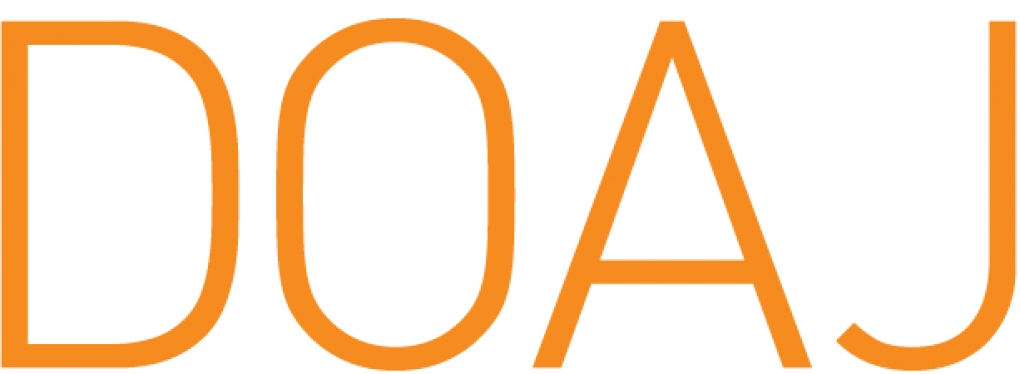Submissions
Author Guidelines
Guidelines for authors
Journal Ánfora thanks you for your interest in publishing with us. The evaluation process for the manuscripts takes approximately 4 months. Manuscripts must be unpublished and not in process with another journal or medium. Also, the manuscript must not exceed 9% of coincidence. The Software available in the UAM is used to analyze the coincidence of the manuscripts. Currently, these processes are carried out with anti-plagiarism software Compilatio.
To the submition of manuscripts (OJS) is necessary to use plantilla para artículo de investigación, plantilla para artículo de reflexión, plantilla para artículo de revisión of the journal. For the title and subtitle styles, please follow the instructions in.
Manuscripts length
Research articles (abstract [with field study]): A research article that presents in detail the original results of completed research projects. The general structure of a research paper has four important sections: introduction, methodology, results and conclusions. The article should be between 6,000 and 8,000 words long, including metadata (title, abstract, keywords and references). Research articles.
Reflection article: An article that critically presents the results of completed research. It develops an analytical, interpretative or critical perspective of the author, on a specific topic based on original sources. The article should be between 6,000 and 8,000 words long, including metadata (title, abstract, keywords and references). Reflection papers.
Review article: An article resulting from a completed research in which the results of published or unpublished research on a field in science or technology are analyzed, systematized and integrated to report developments and trends. It is characterized by a careful literature review of at least 52 references. The article should be between 6,000 and 8,000 words long, including metadata (title, abstract, keywords and references). Review papers.
Review: Critical reviews of researches from the last two years of publication. Its length ranges from 3 to 5 pages. This type of papers should meet the following structure: title, abstract, keywords and body of the text. This is the only manuscript that is subjected to a blind review. All other manuscripts will be subjected to double-blind review. See Ethics Policy. Its structure should have: title, abstract, keywords and the development of the review.
All manuscripts must be unpublished and subjected exclusively to publication in the journal ÁNFORA, and it must take into account that the contents exposed in them are the sole responsibility of the authors see Ethic Policy Similarly, 60 per cent of the updated references of the last five years should be placed in the three types of articles.
Structures
The title of the article shall not be less than 6,000 or greater than 8,000 words. In addition to the full names of the author (link a footnote titles, institutional affiliation, CvLAC [if Colombian] and institutional mail), the ORCID and nationality must be attached below. All authors and reviewers must have the ORCID code. For Colombian authors, it is mandatory to have the CvLAC registration.
The paper, no matter what type it is, must have an executive summary of between 150 and 200 words. It must be analytical, not prose-free. In other words, the field should be filled in after the title of the paragraph after the two points. Example of structure (the fields marked ‘xxxxx’ would be replaced with text):
Objetive: xxxxxxxxx. Methodology: xxxxxxxxxxx. Results: xxxxxxxxxxxx. Conclusions: xxxxxxxxxxxxxxxxx.
Keywords will be five and must be based on a recognized thesaurus (v. gr.: Unesco, ERIC, etc.), which must also be explained.
Citations and references
Citations
The Journal Ánfora follows the style manual the APA standards, 7th ed. Therefore, the citation format will be: (Last name, year, p. xx). In the case of a page range, the abbreviation shall be 'pp. xx-xx' and, when citing a web page the paragraph number will ‘ xx'; or, if it is an audiovisual material, the minutes 'mm. xx:xx-xx:xx'.
According to the 7th ed, three or more authors are cited with the first author’s last name followed by et al. For the use of extensive citations (more than 40 words), use the style “APA +40 words” that is on the template.
References
Use the 'References' style of the template. Some examples of reference guidelines are recommended below:
Books.
Last names, N (Year). Title (translator). Edition. Volume. Editorial.
Example:
Kuhn, T. (2017). La estructura de las revoluciones científicas (trad. C. Solís). Fondo de Cultura Económica.
NOTE:in the 7th ed. the city is no longer indicated.
Chapters of books (contributions).
Last names, N (Year). Title of the chapter (translator) In N, Last name of the author (Ed), Title (pp. xx-xx). Number of Edition Volume, City: editorial.
Example:
Dummett, M. (2012). Teorías del significado veritativo-condicionales (trad. A. García Suárez). En L. Valdés Villanueva (Ed.), La búsqueda del significado (pp. 389-409). Tecnos.
Articles
Last names, N (Year). Title of the article Name if the Journal, volume(number), interval of pages (without ‘pp.’). Link (willingly DOI).
Example:
Acevedo Tarazona, Á., y Quiroz Prada, M. (2022). Marx en clave de actualidad: Resignificaciones, descentramientos y resistencias desde el Sur Global. Ánfora, 29, 29(53)–41. https://doi.org/10.30854/anf.v29.n53.2022.844
NOTA:In the 7th ed. the term ‘DOI’ or ‘retrieved from” before two points, but the full link is written.
Project works or thesis
Last names, N. (Year). Title (Degree to grant). University. City, Country: Link
Example:
Galindo Ramírez, M. L. (2013). Influencia de la televisión en los discursos de las estudiantes del grado 8 de la Institución Educativa Laura Vicuña del municipio de Bello (tesis de maestría). Universidad de San Buenaventura, Medellín, Colombia. http://bibliotecadigital.usbcali.edu.co/bitstream/10819/1628/1/Influencia_Television_Discursos_Galindo_2013.pdf.
Copyright Notice
Once the manuscript is approved, the authors should file and sign the Right Transfer Format.
Privacy Statement
The names and e-mail addresses entered in this journal will be used exclusively for the purposes established in it and will not be provided to third parties or for their use for other purposes. Acording to Ethic, Bioethic and Integrity Scientific Policy.







